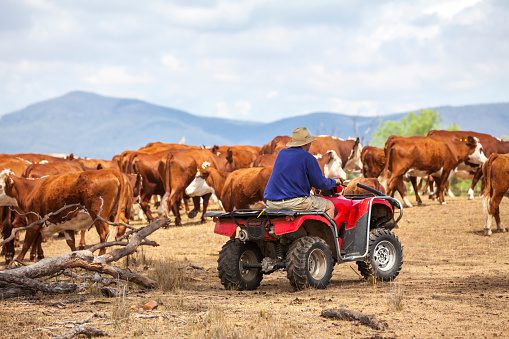WHSQ Investigates New Quad Bike Legislation

Quad bike incidents
Quad-biking incidents, particularly in the rural and agricultural sectors, have long been the cause of many serious and fatal accidents. In the first half of 2020 alone fourteen people (including three children) were killed in quad biking incidents in Australia. This doesn’t include accidents that resulted in serious and life-changing injuries like Domenic Cocco’s incident in Queensland. Domenic suffered severe head injuries on a friend’s farm when learning how to ride a quad bike. Domenic, who was not wearing a helmet, crashed into a power pole and was airlifted to Townsville in an induced coma. Fortunately, and against all expectations, Domenic survived and made an almost full recovery.

This is a story that is all too familiar to Work Health and Safety Queensland inspectors, with 50% of all national quad bike fatalities happening in Queensland.
Why are quad bikes so dangerous?
Despite having four wheels rather than two, quad bikes are inherently unstable. Traditionally the focus of quad bike safety has been on safe design, however, rider behaviour is also a significant contributing factor to many incidents. The typical operating environment of quad bikes also contributes to incidents. This environment generally includes uneven ground and unseen hazards in long grass and steep terrain.
Summary of key statistics for Australia:
- Over 150 fatalities since 2011
- One in six fatalities were children
- Two-thirds of fatalities are caused by rollover
What are the current safety controls?
As we know from the hierarchy of controls, driver behaviour (administration) controls will be significantly less effective than design control (engineering). PPE, i.e., helmets are also a critical safety control, albeit not to stop an incident from happening but rather to protect the riders’ heads on impact.
Administrative controls could include awareness campaigns, licensing or training requirements and further information provided to riders however the government is adamant the driving force needs to be design changes implemented by manufacturers and suppliers.
What is the government investigating?
The government is investigating a range of potential legislative requirements, including:
- Making helmet use a legal requirement
- Banning children from full-size quad bikes
- Restrictions on carrying passengers
- Seat belt requirements
- Training requirements
The government is also ensuring farmers are engaged in the process as quad bikes are a vital piece of equipment on many farms, and excessive regulation that proves too cumbersome for quad bike companies or users may result in farmers losing access to these crucial machines.
What about federal government regulation?
In addition to the investigations being undertaken by WHSQ, the federal government has implemented recommendations from the Australia Competition and Consumer Commission (ACCC) requiring new and second-hand imported quad bikes to:
- Meet the US quad bike standard, ANSI/SVIA 2-2017 or the European standard (EN15997:2011).
- Be tested for lateral stability using the tilt table test and to have the results of this displayed on the hang tag for the consumer to be made aware of.
- Have a legible label affixed, visible when the quad bike is in operation with the purpose of alerting the operator to the risk of rollover.
- Include rollover safety information in the owner’s manual.
- Be fitted with an operator protection device
- Meet the following stability requirements as a minimum (1 (lateral) – must not tip onto two wheels on a slope less than 28.81 degrees 2 (longitudinal) – must not tip onto two wheels on a slope less than 38.65 degrees)
